Madagascar
island sovereign state off the coast of Southeast Africa, in the Indian Ocean
Madagascar is a country in the Indian Ocean off the eastern coast of Africa. It is known for its particularly unique wildlife and flora. Madagascar split from India approximately 88 million years ago, and as a result of its long isolation it is home to a massive number of unique plant and animal species, with over 90% of its wildlife and 80% of its plants found nowhere else on the planet.
Regions
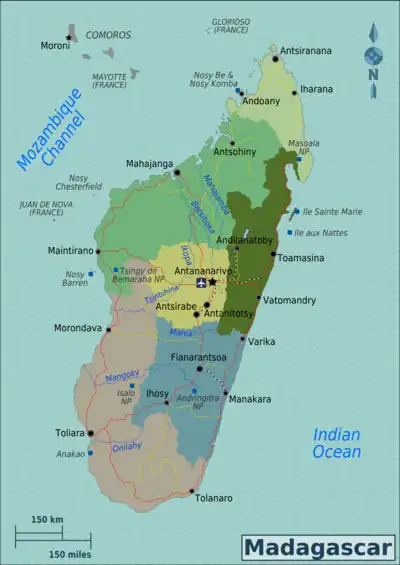
| Antananarivo Province (Antananarivo, Antsirabe) The capital is the arrival point for many visitors, and the hub of the domestic airline and land transport routes. Outside of the capital are small towns known for their craft workshops, as well as small reserves that are home to lemurs. |
| Antsiranana Province (Antsiranana, Masoala National Park, Nosy Be) Home to the beautiful tropical island of Nosy Be, and its surrounding sub-islands, this region is where most travellers go for upscale resorts and pristine beaches, and is one of the most popular destinations in the entire country. |
| Fianarantsoa Province (Fianarantsoa, Ambositra, Ambalavao, Andringitra National Park, Ranomafana National Park) The area south of the capital is home to rain forests and mountains, and relatively accessible via RN7. |
| Mahajanga Province (Mahajanga, Tsingy de Bemaraha Reserve) Mahajanga is home to impressive wetlands and some hidden resorts that can be reached only by private plane or boat. |
| Toamasina Province (Toamasina, Vatomandry, Ile aux Nattes, Andasibe-Mantadia National Park) This province is home to Andasibe-Mantadia National Park, where the Indri lemurs sing, and to some less-visited destinations along the eastern coast. |
| Toliara Province (Toliara, Anakao, Isalo National Park) The southern portion of the country is the land of the spiny forest, with hot and dry conditions leading to an environment of harsh vegetation that is nevertheless home to a vast array of lemurs, lizards, birds and insects. |
Cities
Other destinations
Understand
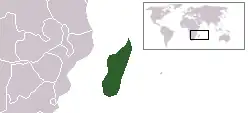 | |
| Capital | Antananarivo |
| Currency | ariary (MGA) |
| Population | 25.5 million (2017) |
| Electricity | 127 volt / 50 hertz and 220 volt / 50 hertz (Europlug, AC power plugs and sockets: British and related types, Type E, SEV 1011, Type K) |
| Country code | +261 |
| Time zone | UTC+03:00, Indian/Antananarivo |
| Emergencies | 117 (police force), 118 (fire department), 124 (emergency medical services) |
| Driving side | right |
| edit on Wikidata | |
People
Despite its proximity to Africa, language and DNA studies show that the people of Madagascar are predominantly ethnically Austronesian; their ancestors between 350 BCE and 550 CE. Later, around 1000 CE, migrants crossed the Mozambique Channel and arrived from East Africa, and were followed by Arabs, Indians, and Chinese immigrants. The Malagasy way of thinking, as well as their appearance and fashion style, is a mixture of cultures.
Madagascar is part of the African Union, but was suspended from the organization from 2009 to 2013. There was political turmoil in Madagascar in 2002 and again between 2009 and 2010, which led to a decrease in tourism, but the situation was resolved to the satisfaction of the international community with the adoption of a new constitution in 2010 and presidential elections in 2013 that were judged to be free and fair. Any continuing political issues seem likely to be debated peacefully with words and not coups or other drastic actions, for the foreseeable future.
Madagascar is home to 18 ethnic groups, but the largest and predominant group are the Merina of the central highlands.
Ecology
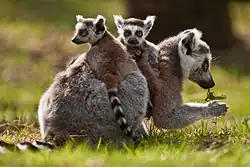
- See also: Wildlife of Madagascar
Due to its uniqueness some ecologists refer to it as the "eighth continent".
Madagascar is home to nearly 15,000 plant species, with highlights including the massive and ancient baobab trees, the unique spiny forests of the south, over 800 species of orchids, and the dwindling rain forests. Human activity, particularly the fires used for agricultural purposes, have damaged the environment, and since the arrival of humans approximately 90% of the island's original forest has disappeared.
Animal life on the island is equally impressive, in particular the more than 100 species of lemurs, nearly all of which are rare or threatened. The island is home to over 300 species of birds, approximately 260 species of reptiles, and a massive number of amphibians and insects.
The eastern, or windward side of the island is home to tropical rainforests, while the western and southern sides, which lie in the rain shadow of the central highlands, are home to tropical dry forests, thorn forests, and deserts and xeric shrublands. Madagascar's dry deciduous rain forest has been preserved generally better than the eastern rainforests or the high central plateau, presumably due to historically low population densities.
Holidays
- January 1: New Year's Day
- March 29: Martyrs Day
- Easter (variable)
- June 26: Independence Day (celebrates independence from France in 1960)
- November 1: All Saints Day
- December 25: Christmas
Climate
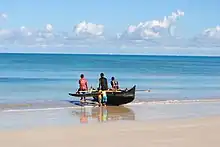
The climate is tropical along the coast, temperate inland, and arid in the south. The weather is dominated by the southeastern trade winds that originate in the Indian Ocean anticyclone, a centre of high atmospheric pressure that seasonally changes its position over the ocean. Madagascar has two seasons: a hot, rainy season from November to April; and a cooler, dry season from May to October. There is great variation in climate owing to elevation and position relative to dominant winds. The east coast has a sub-equatorial climate and, being most directly exposed to the trade winds, has the heaviest rainfall, averaging as much as 3,500 mm (137.8 in) annually. This region is notorious not only for a hot, humid climate in which tropical fevers are endemic but also for the destructive cyclones that occur during the rainy season, coming in principally from the direction of the Mascarene Islands. Because rain clouds discharge much of their moisture east of the highest elevations on the island, the central highlands are appreciably drier and, owing to the altitude, also cooler. Thunderstorms are common during the rainy season in the central highlands, and lightning is a serious hazard.
Antananarivo receives practically all of its average annual 1,400mm (55.1 in) of rainfall between November and April. The dry season is pleasant and sunny, although somewhat chilly, especially in the mornings. Although frosts are rare in Antananarivo, they are common at higher elevations.
Read
- The Eighth Continent: Life, Death, and Discovery in the Lost World of Madagascar by Peter Tyson. Extensive descriptions of Madagascar's wildlife, as well as lots of details about Malagasy culture.
- The Gardens of Mars: Nadagascar, an Island Story by John Gimlette. More of a focus on the spectacularly complicated and bloody history of the island's people.
- The Bradt Guide to Madagascar
Tourist information
- Madagascar Tourism website
Talk
The entire island speaks one language: Malagasy, an Austronesian language. "Malagasy" refers to both the language and the people of the island. Because the island is so large, there are many different dialects. The Merina dialect is the "Official Malagasy" of the island and is spoken around highlands of Antananarivo. Most Malagasy, however, speak Merina across the island. Attempts by foreigners to learn and speak Malagasy are liked and encouraged by the Malagasy people. Today, Malagasy is the daily language spoken by 98% of the population in Madagascar, and since 1972, Malagasy has been used as the language of instruction in some schools. As an Austronesian language, Malagasy is more closely related to languages spoken in maritime Southeast Asia and the Pacific islands than to other African languages.
French is the second official language of Madagascar, and most individuals encountered in parks and other touristy areas will speak fluent French.
English is increasingly common and many hotels and parks will have at least a few English-speaking staff. Italian, German, Spanish and Japanese are understood to a lesser extent in areas where tourists are likely to visit.
Some basic Malagasy vocabulary that will help relate to the Malagasy people (there are many different regional versions of the Malagasy language across the country):
| Malagasy | English |
|---|---|
| Vazaha | Foreigner |
| Misoatra | Thank you |
| Salama | Hello |
| Veloma | Goodbye |
| Azafady | Please/Sorry/Excuse me |
Get in
Visa
Visitors from most countries can obtain a Madagascar tourist visa upon arrival in Madagascar (information accurate as of March 2020).
- For stays of up to 14 nights €10
- For stays of up to 30 days US$37 or €35.
- For longer stays of up to 60 days US$45 or €40.
- The Antananarivo airport visa on arrival counter was no longer issuing 90-day stays as of November 2018.
You must pay for the visa with cash: in US dollars or euros. They also ask for an address of your first night stay.
You can get a 30 day visa extension 80.000Ar at the Immigration Office at the ministry of the Interior five minutes from Carlton Hotel in Antananarivo or at the commissariat of police offices around Madagascar. The maximum stay on a tourist visa is 90 days. After 90 days, you can go to Reunion or Mauritius then come back.
Vaccination
Prior to your trip, you should ensure that your routine vaccinations are up-to-date; these include polio, hepatitis A, hepatitis B, MMR and typhoid (check with your doctor). If you are travelling through a country where yellow fever is present then you will be required to show proof of vaccination for yellow fever before you will be allowed entry into Madagascar.
By plane
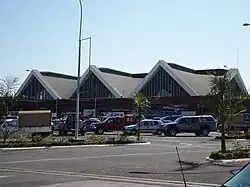
International flights to Madagascar generally either go to Antananarivo (TNR) or Nosy Be (NOS). Madagascar Airlines is the national carrier and offers flights from Paris Charles de Gaulle , Marseille and Guangzhou, Other airlines serving Madagascar:
- Airlink South Africa provides daily flights from Johannesburg.
- Air France offer flights from Europe, North America, South America via Paris Charles de Gaulle.
- Air Austral offer flights to Antananarivo, Nosy Be, Toamasina from Paris, Marseille, Bangkok, Chennai, Johannesburg, Mauritius, Seychelles. Flights transfer on Reunion Island.
- Air Mauritius from Europe, Asia and Australia via Mauritius.
- Kenya Airways operates regular service from Europe, North America, Asia and Africa via Nairobi.
- Turkish Airlines from Europe, North America, South America and Asia via Istanbul has some low fares but have two stops via Mauritius and Istanbul
- Ethiopian Airlines from Africa, Europe, North America, South America and Asia via Addis Ababa.
- Comores Aviation fly from Moroni and Anjouan
- EWA Air fly from Mahajanga, Antsiranana, Nosy Be to Mayotte.
Expect to pay around 40 000 Ar to get to Tana by taxi, but drivers might easily ask for 60 000 Ar. Otherwise you can get to the Ivato town nearby and take a taxi-be (a local shared taxi bigger than a van) for around 600 Ar. Because you must also buy a seat for your luggage, it will cost 1200 Ar.
By boat
The only regular link used to be between Toamasina on the east coast and Mauritius via Reunion. This service has been suspended since December 2014.
Get around
By plane
Madagascar Airlines serves 11 destinations throughout the country, and provide a much faster option than driving given the poor state of many roads. While the airline will provide you with a hotel and book you on the next available flight in the case of a cancellation, don't book tight connections and always confirm your flight time the night before.
By train
As of 2023 Madarail operates only one service, a 9-hour trip between Moramanga (115 km east of Antananarivo) and Ambila Lemaitso on the east coast. The railway dates from the colonial period, so breakdowns are frequent due to poor maintenance, and the line may be closed for several weeks.
By car
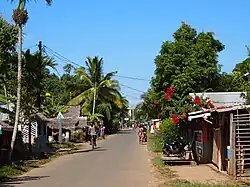
Madagascar's roads are almost all of very low grade (with the exception of 2 routes leading out of Tana). Many roads are studded with potholes and are quagmires in the rainy season. Travel by road will almost always take much more time than you would normally expect. Hire of a 4WD vehicle can reduce this problem but the cost will be higher but still very cost effective if you are not travelling alone and able to split the rental fee between the members of your group (at least US$70/day/car as of October 2014). In nearly all cases a car rental will include the cost of a driver and his accommodation, but verify when booking your rental; most companies will not rent a car without a driver, and in many cases the driver can act as your guide and translator as well.
By taxi-brousse
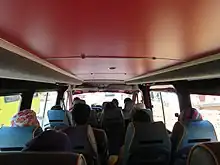
Taxi-brousse, or interurban shared taxi, is the way most natives travel around the country. There are three major modern roads in the country: RN7 from Tana to Toliara, RN2 from Tana to Tomasina (via Brickaville) and RN4 from Tana to Mahajanga. Trips between those towns take about a day, whereas traveling between Tana and Taolagnaro, a south-eastern coastal town, would take about 3 or 4 days due to the condition of the road. Travel is cramped, and don't expect air conditioning. Expect dust to be a problem in the dry season. Travel by taxi-brousse is guaranteed to test one's patience and sanity, but there is quite possibly no better way to meet and interact with the locals and experience Madagascar as the Malagasy do.
Taxi-brousse is by far the cheapest way to travel, but do not expect to leave or arrive on time. Indeed, the drivers wait for their 15-seat small buses to get full before leaving; therefore, a few hours' delay is never excluded. However, the trip allows you to admire the breathtaking landscapes of Madagascar. Most national parks and towns can be reached from Antananarivo; drivers will happily drop you off en route to their final destination.
- Cotisse Transport serves Mahajanga, Morondava, Fianarantsoa and Toamasina.
- Besady Plus buses leave on time, whether full or not. The provide free wifi and go between Antananarivo and Nosy Be via Ambanja and from Antananarivo to Sainte Marie via Toamasina. The tickets include sea transfer.
By taxi-be
In Tana, the cheapest way to get around is by taxi-be, or big taxi, which is a bit larger than a mini-van. There is one aisle with seats to fold down so they can cram in even more people. During peak season, buses run frequently. Prices are around 600 Ar, as of November 2018, the 183 which is one of the buses going to Cotisse Transport costs 400 Ar.
By boat
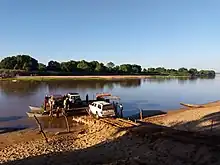
If you are looking for an unusual holiday, a yacht charter to Madagascar might be a good choice.
For those who would like to bareboat, a “guide” is usually included in the price of the yacht charter. Although obligatory, he comes with the price and is essential for the multitude of services he will provide. He will prepare the food, recommend anchorages, know where to fish and refill the water tanks. He will speak the local language and have an established relationship with the local people. He will protect the boat from theft when you leave it to explore on land. The guide lives completely on the exterior of the boat and does not require a cabin. A yacht charter to Madagascar is a bit of a “Robinson Crusoe” adventure. Once you embark, you will not be able to stock up provisions again and must live off the fish and seafood you will catch for yourself (or with your guide). So take great care with your provisioning list.
This problem can be avoided by chartering one of the crewed catamarans. The boats are designed for stability so sea sickness is not really a problem. The crew prepare the boat with linen, food and drinks before your arrival -basically these boats are like a personal floating hotel. Depending on which boat you choose you could receive excellent service and food and suggestions of where to go and what to do. Choose your catamaran carefully as there are some really old ones in service- make sure the crew can speak your language.
By bicycle
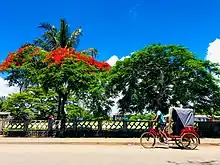
Madagascar is a great place to tour by bike and staying in small towns and villages along the way gives a real sense of what the country is all about. A mountain bike or heavy duty tourer at least is required as the roads can be in poor to terrible condition. In the rainy season on the east coast the main north-south road can become impassable, possibly leading to a two-day walk - over soft sand in one section - this is not an easily rideable route. Generally there is little to no traffic which makes cruising around a great pleasure. The people are amazingly friendly and you'll be greeted with crowds of children shouting 'Vazaha' in every village.
There are few or no facilities for cyclists, so be prepared to camp rough (ask if it is somebody's land and never too near a family grave) or sleep in very basic guesthouses. Likely you will be invited to stay in people's houses. Bring a spare tire, puncture kit, chain, brake or gear cable, derailleur and all the tools you need.
See
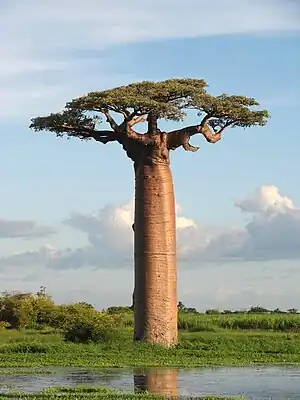
- 🌍 Tsingy de Bemaraha Strict Nature Reserve. is a
 UNESCO World Heritage Site and is Madagascar's largest reserve (152,000 hectares). The fascinating raised limestone plateau is decorated with a frail, chaotic razor-sharp collection of pinnacles, the “Tsingy”, also called the Labyrinth of Stone. Areas of deciduous forest also provide the chance to see brown lemurs, a variety of bird life and the rare all white Decken’s sifaka. The great variety of flora includes: aloes, orchids, numerous pachypodium and baobabs. The deciduous forest is home to over 50 species of birds; 7 species of lemurs (including the all-white Deckens sifaka) and the rare stump-tailed chameleon (Brookesia perarmata). The site of Bemaraha is managed under special UNESCO and access is restricted and the areas you are allowed to visit vary from time to time. Located approximately 180 km north of Morondava.
UNESCO World Heritage Site and is Madagascar's largest reserve (152,000 hectares). The fascinating raised limestone plateau is decorated with a frail, chaotic razor-sharp collection of pinnacles, the “Tsingy”, also called the Labyrinth of Stone. Areas of deciduous forest also provide the chance to see brown lemurs, a variety of bird life and the rare all white Decken’s sifaka. The great variety of flora includes: aloes, orchids, numerous pachypodium and baobabs. The deciduous forest is home to over 50 species of birds; 7 species of lemurs (including the all-white Deckens sifaka) and the rare stump-tailed chameleon (Brookesia perarmata). The site of Bemaraha is managed under special UNESCO and access is restricted and the areas you are allowed to visit vary from time to time. Located approximately 180 km north of Morondava.
- 🌍 Avenue of the Baobabs. is an extraordinary stand of huge baobab trees, 45 minutes north of Morondava on Madagascar's west coast. It is one of the most visited sites in the Menabe Region. A candidate as one of the 7 Wonders of Africa; efforts are underway to protect this unique grove of more than a dozen trees. Some of the trees, Adansonia grandidieri, are over 800 years old and reach a height of more than 30 metres. A photographer's paradise, and especially beautiful at sunset.
- Sites from the Merina Kingdom can be seen across different parts of Madagascar.
Do
Most people visiting Madagascar do so for the wildlife, and there are a number of national parks and private reserves scattered throughout the country. Some are easier to reach than others - the dual Andasibe-Mantadia National Park area is a few hours from the capital via a paved road, while other parks require days of driving and trekking to explore.
Scuba diving and snorkeling is exceptional in Nosy Be, and is also possible in other areas like Toliara. Be aware that the nearest hyperbaric chamber lies across the Mozambique Channel, and that outside of Nosy Be scuba equipment may not be up to expected standards, so exercise caution and be careful to minimize risks when diving. The condition of corals varies from pristine at Nosy Tanikely to completely destroyed elsewhere, and depending on time of year the visibility may exceed 30 metres, or may be reduced to zero by the outflow from rivers, which, due erosion caused by deforestation, can turn the ocean brown. In the far north near Diego kitesurfing and windsurfing are exceptional between April and November when a constant 30 knot-wind makes the area one of the best surfing spots in the southern hemisphere. Kayaking and deep sea fishing are always rewarding water activities.
The ![]() UNESCO World Heritage Site Rainforests of the Atsinanana is made up of six national parks along the eastern coast of Madagascar; Marojejy National Park, Masoala National Park, Zahamena National Park, Ranomafana National Park, Andringitra National Park and Andohahela National Park.
UNESCO World Heritage Site Rainforests of the Atsinanana is made up of six national parks along the eastern coast of Madagascar; Marojejy National Park, Masoala National Park, Zahamena National Park, Ranomafana National Park, Andringitra National Park and Andohahela National Park.
Buy
Money
|
Exchange rates for Malagasy ariary
As of January 2024:
Exchange rates fluctuate. Current rates for these and other currencies are available from XE.com |
Local money is the Malagasy ariary, denoted by the symbol "Ar" (ISO code: MGA). Ariary banknotes come in denominations of 100, 200, 500, 1,000, 2,000, 5,000, 10,000 and 20,000 Ar.
The ariary is subdivided into 5 iraimbilanja, making it one of only two non-decimal currencies, but travellers will never have to deal with this minuscule unit of currency.
There are ATMs in larger cities and bigger towns where you can withdraw ariary cash with Visa, Visa Electron, Mastercard, Maestro, Union Pay. Diners club, American Express, Discover card. The withdrawal limit is (usually 400,000 Ar). ATMs are frequently en panne due to connection problems or other technical difficulties. Carry a US dollar or euro emergency reserve with you.
BFV Societe Generale & BOA-Bank of Africa ATMs have a withdraw fee of 8000-10200Ar per withdraw for overseas bank cards. All other ATM networks in Madagascar have no withdraw fee at this time.
The Seven ATM networks in Madagascar are:
- AccesBanque ATMs take Mastercard, visa card, Union Pay. (no withdraw fee)
- BGFI ATMs only take visa card. (no withdraw fee)
- BMOI ATMs take only Visa card. (no withdraw fee)
- BOA-Bank of Africa ATMs take only Visa card.
- BNI ATMs take Mastercard and visa card. (no withdraw fee)
- BFV Societe Generale ATMs take Mastercard, Visa card, Maestro, Union Pay, Diners Club, American Express and Discover cards.
- MCB-Mauritius Commerce Bank ATMs take Mastercard, Visa card, Diners Club and Discover cards. (no withdraw fee).
Credit cards are accepted by many hotels, restaurants and shops in Antananarivo and Nosy Be, You may have too pay an extra charge for the credit card commission, which ranges between free and 8%.
Occasionally, hotels and other services used by travellers are quoted in euros. Generally, payment in the local currency is expected but euros are usually also accepted. If you wish to pay in euros, clarify the conditions at which the euro price is converted to avoid that a very bad exchange rate is applied.
For changing money, as of June 2023, locals will not recommend going to a bank, but rather use the services of a money changer. Money changers are usually ambulant. Ask the receptionist of your accommodation or an expatriate living in Madagascar to recommend you one. Usually, the money changer will come to your hotel for the transaction. You get better rates for large denominations of euros and US dollars and UK pounds and rates are better in Antananarivo than in provincial cities.
- Socimad exchange has a bureau de change (open 24 hours TV) at the Ivato airport, and one in downtown (Lalana Radama 1).
Shopping
Vanilla and other spices are cheaper in Madagascar than in Europe or elsewhere, and the quality (especially of vanilla) is very good.
Tipping
Tipping is a matter of much confusion in Madagascar, and is made more confusing because expectations are different when the customer is a foreigner instead of a local. In restaurants and bars you should leave a tip equivalent to ten percent of the total bill. Locals will generally leave far less. If someone helps you with your bags consider a tip equivalent to US$1 per bag. In taxis, rounding the bill upwards is more than sufficient. If you have a private vehicle with a driver, tipping the equivalent of US$10-13 per day is considered extremely generous, while US$5-10 per day is normal for standard service. A good tip for a park guide is approximately US$7-10 per day. Individuals who clean hotel rooms are sometimes not given a salary, so consider leaving a few dollars in the room when you depart (many hotels will have a tip box in the lobby that can also be used to tip the entire staff). When in doubt about how much to tip, consider that even a doctor or university teacher may be making less than 200,000 Ar per month, and remember that in remote areas your tip may set expectations for travelers who follow you, some of whom may be researchers or aid workers with limited funds available (as of October 2018).
Eat
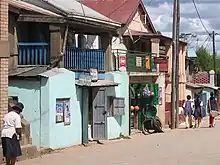
The cheapest way to get a meal is to eat at a "hotely". A plate of rice, laoka (malagasy for a side dish accompanying rice) like chicken, beans or pork, and rice water costs about 3000 Ar (2020). For 1000 Ar extra you can get a small glass of homemade yoghurt.
Bananas (hundreds of varieties) and rice cakes (Malagasy 'bread') are staple 'street food' and available everywhere. Coffee is very good, usually hand-made by the cup and served very sweet with condensed milk.
Steak-frites is available in restaurants in the larger towns.
Supermarkets
There are supermarkets all over Madagascar. The four biggest supermarkets chains are Super U, Score, Leader price and Supermaki. All four Western style supermarket chains are well stocked. There are many leader price & Super U-branded goods but also some more local produce (veg, spices, etc.) Super U is slightly cheaper and has many stores in Antananarivo, Mahajanga, Toamasina and Antsirabe.
Drink
There is no safe tap water so be prepared with bottled water, which is usually easily obtainable. The only other option is ranon'apango (RAN-oo-na-PANG-oo) or rice water (water used to cook rice, which will therefore have been boiled). It's particularly important to plan ahead if visiting rural areas. It is worth taking with you some chlorine tablets, which can be used to make the local water drinkable.
In towns, roadside drink stands, stores and bars are plentiful. Most sell a range of drinks including bottled water, Fanta, Coca Cola and Madagascar's beer, Three Horses Beer (THB). You can also try the bubblegum flavoured 'Bonbon Anglais', which is to South American Inka Cola, although it may be sold as 'limonade' - leading you to think it may be lemonade.
Home brewed rum, and creme de coco, is also available in many flavours.
Sleep
Lodging quality varies dramatically throughout the country, from dorm-style rooms to luxury five-star resorts. In most places room prices will be quoted per room, although many luxury resorts quote prices per person. Insect nets and private bathrooms are provided in nearly all of the more upscale lodging, although in lower-priced establishments you may need to provide your own bug net. There are backpacker hostels in a few places with prices from US$5.
Learn
Learn some Malagasy. The single best thing you can do to have a fun and safe trip is to speak the local language. There are a number of guidebooks you can buy to learn Malagasy, or alternatively you can ask someone to teach you. Just a few words will make all the difference.
Stay safe
Madagascar is a fairly safe country. You must, however, respect some simple principles:
- Don't walk around at night in Antananarivo (other cities are pretty safe).
- Don't exhibit signs of wealth (cameras, jewels).
- Similarly, always carry small notes. Paying with large denomination notes shows off your wealth, can insult the seller because they will not have change, and opens you up for becoming a target for crime.
- Keep an eye on your belongings when using public transport or visiting markets where numerous pickpockets swarm.
- Learn the Malagasy word for thief, "Mpangalatra" which is pronounced "Pun-gul-ah-tra". If someone is trying to rob you in a busy market area scream this. The fact that a vazaha is screaming thief will unsettle the thief and alert the people near you to help.
- Always listen for the words "vazaha" or "vazongo" when spoken in low tones. If you hear these words be aware that someone is talking about you, for better or for worse!
The centre of Antananarivo should be avoided, as well as the Ankato area, Avenue de L'Independence, Ambohijatovo, Analakely, Bohorika, Isoraka, Ampasamandinika, 67ha, Isotry and the area around the military barracks. Elsewhere in the country, Nosy Be, Toamasina (Tamatave), Mahajunga, Ankarana, Isalo, Montagne d'Ambre Nature Reserve, Tuléar and Batterie Beach, and the RN 7 and RN 27 roads are particularly to be avoided.
Like any other developing country, there are a lot of beggars. This is sometimes uncomfortable for tourists, but these people should be respected nonetheless. They are, predictably, attracted to foreigners and will not hesitate to ask for a hand-out. If you don't want to give, a simple "Non, merci" or "Tsy Misy (tsee-meesh)" (I have nothing) will do the trick. If they persist, try shouting "Mandehana! (man-day-han)" (Go Away!) It is recommended not to give money, but other useful items, such as a banana, a piece of bread, etc. It is usually accepted with gratitude, and if the beggar is a child, he will run away with a smile on his face. It is imperative not to encourage begging - in Madagascar the people do not really believe in getting something for nothing and will invariably offer you something first. For example a chameleon to photograph.
Stay healthy
Visitors to Madagascar should be aware of a vast number of health concerns. Diseases such as the plague, which are almost unheard of elsewhere, still occur in Madagascar. Drinking water is almost never safe for foreigners; treated or bottled water should always be used, and salads or dishes containing unpeeled fruits or vegetables should be avoided. While the AIDS epidemic has not reached the devastating level found in many southern African countries, it is widely assumed that the incidence of AIDS is underestimated and rising, so you should take no risks and avoid unprotected sex in all cases. When swimming, beware of the possibility of human waste in the water, which can cause cholera, typhoid, and a number of other diseases. Leeches and tropical parasites are also a concern.
Research malaria prophylaxis options, and follow through. If you are not taking any prophylactics, be sure to always use a mosquito net for sleeping, and apply mosquito repellents once dusk sets in. On-skin repellent (only repellents containing ~40% DEET are effective, such as NoBite, or Azeron Before Tropics) is good but should be used in combination with on-clothes repellent (i.e., NoBite). The clothes repellent is odorless approximately an hour after application, and clothes can be washed up to 4 times before it needs to be re-applied. If you wear long-sleeve clothing treated with the repellent and apply on-skin repellent to the skin parts not covered, you will be very safe against mosquito bites and can skip the prophylaxis with its notorious side effects. Take the repellent issue seriously, though, as it's very easy to fall into a more 'relaxed' mode after you've spent some time in the country.
Areas inhabited by humans will invariably have large populations of stray dogs. Avoid stray dogs, and although bites are rare, if bitten seek medical assistance promptly as rabies is not unheard of.
Remember that Madagascar is in the tropics and take precautions against sunburn and heat exhaustion seriously. Wear lots of sunscreen and keep hydrated. A cloudy day does not mean you won't get burnt.
Respect
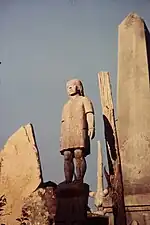
Everyday life in Madagascar is regulated by numerous fady (taboos) which vary from one region to another. They can forbid foods (lemur, turtle, beef), wearing clothes of a particular colour, bathing in a river or a lake, etc. Observance of "Fady" is mostly limited to rural areas, as tourists will most likely not encounter this problem if they stay in the main towns. However, there are Fadys in places such as Antananarivo but most vazaha are exempt.
Fady are attributed to ancestors, to whom Malagasy adopt a respectful attitude whatever their religion. It is safest to respect these prohibitions and not violate them, even if you feel they don't make sense. Inform yourself about local fady when you arrive in a new place.
When addressing anyone older than you or in a position of authority (e.g. police, military, customs officials), use the word "tompoko (toom-pook)" the same way you would use "Sir" or "Ma'am" in English. Respect for elders and authority figures is important in Madagascar.
Do not ever take photos of a tomb without permission. Always ask permission before taking photos. Also, if you go to a remote village or hamlet it is fomba or tradition that you first meet with the head of the village if you have business in the village. Meeting this person can save you a lot of time if you have work to do there.
Connect
International phone calls and 4G Internet via data can be done via cell phone companies such as Airtel, Orange or Telma they work off prepaid phone cards. International phone calls using Telma to Europe cost 900 Ar per minute. There are also Internet cafes in the major cities and most large towns. Electricity may be erratic. Many areas have either mandatory shutdown hours or rationing. It's best to bring an openline smart phone and buy a SIM card when you get to Madagascar. It's also useful to have a powerbank. Most hotels now also have Wi-Fi.
You can also easily buy a SIM card from anyone of the cell phone companies and get a data plan. The process is fairly easy compared to other countries and SIM cards can be bought directly in the airport with the whole activation and buying process being done in less than 10 minutes. SIM cards and credit are also among the few things you can easily get hold of throughout the country, including in provincial towns and small rural villages. As of December 2018, a 12GB data plan good for 30 days is 75 000 Ar.
Do not expect a data connection everywhere on the island, but when you do have data connection, the fast 4G network is fairly impressive and allows free VoIP calls. Telma sells their SIM cards for 500 Ar. Orange sells their SIM card for 2000 Ar.
A stamp for a postcard to anywhere in Europe costs 1100 Ar.